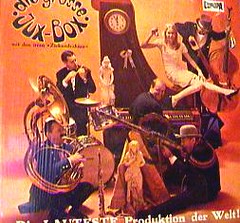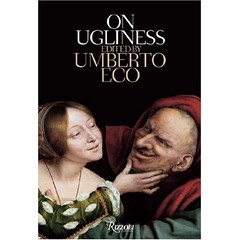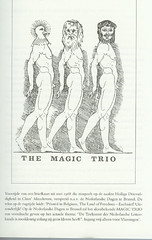Saturday in Antwerp. First to Demian Antiquariaat, bought Dutch translations of Boris Vian‘s And We’ll Kill All the Ugly Ones (En al wie lelijk is maken we af) and Dirty Weekend for the birth of Romi, newly born daughter of G___ and E___.
I then went to Lars of Vinyl looking for Greta Keller. I ended up getting Camille Saint-Saëns‘s The Carnival of the Animals, Spike Jones and Marlene Dietrich compilations and a strange novelty polka record Die Grosse Jux-Box on Europa (record label).
Afterwards, I headed for the Fnac. The kind young man who had recommended Comic Grotesque two years earlier told me that On Ugliness by Eco had not yet been translated to English. He also showed me the informed The Atlas of Contemporary Art.
Plate from book on Masscheroen, illustration sourced here.
At around 16,00 pm, I went back to Demian Antiquariaat for the official opening of the Freddy de Vree expo: Antiquaire du surréalisme. Despite his feeble-voiced delivery which would have benefited from the use of a microphone, I enjoyed Christophe Vekeman‘s text on de Vree, who had apparently never met de Vree but who had been contacted by him on several occasions to react to his De Morgen columns. Vekeman’s angle was the mask-wearing of de Vree, sliding into his argument via a recent purchase of Mishima‘s Confessions of a Mask, which had also been a favorite of de Vree. The mask-wearing practices were represented at the expo by several “literaire mystificaties” (pseudonymously published works or “literary mystifications”) by de Vree such as Conny Couperus’s Sneeuwwitje en de leeuwerik van Vlaanderen (with Hugo Claus), a send-up of the crime thriller genre.
Afterwards I overheard the widow of de Vree, Marie-Claire Nuyens, talking to a man, a friend of the family. Her remarks shed more light on the character of de Vree than the speech or the exhibition. The man asked how the expo had come about. Marie-Claire replied: “It all started with a couple of e-mails by René” (owner of Demian). Marie-Claire remembered René because Freddy had said that he liked the young book shop owner. Continuing: “You know how very rarely Freddy expressed his appreciation for someone, so I figured, let’s do the exhibition.” With this de Vree’s widow confirmed that – as was to be expected from being a very close friend to the sometimes labeled arrogant W. F. Hermans – de Vree may not have been “De aardigste man van de wereld”.
Antiquaire du surréalisme features a wide selection of original editions by de Vree; photographs; recordings of his interviews with Topor, Burroughs, Alechinsky; photographs of the play Masscheroen (1968), in which de Vree stars nude. Notably absent at this opening was Sylvia Kristel, the last companion of de Vree. The expo at Demian is on until December 1, dedicated to one of the only intellectuals worthy of that title in Belgium.




